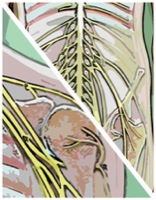Consumer Updates FDA Warns of Rare Acetaminophen Risk

Acetaminophen, a fever and pain reliever that is one of the most widely used medicines in the U.S., can cause rare but serious skin reactions, warns the Food and Drug Administration (FDA).
Although rare, possible reactions to acetaminophen include three serious skin diseases whose symptoms can include rash, blisters and, in the worst case, widespread damage to the surface of skin. If you are taking acetaminophen and develop a rash or other skin reaction, stop taking the product immediately and seek medical attention right away.
Used for decades by millions of people, acetaminophen is the generic name of a common active ingredient included in numerous prescription and non-prescription medicines. Tylenol is one brand name of the pain reliever sold over the counter, but acetaminophen is also available as a generic under various names. It is also used in combination with other medicines, including opioids for pain and medicines to treat colds, coughs, allergy, headaches and trouble sleeping.
"This new information is not intended to worry consumers or health care professionals, nor is it meant to encourage them to choose other medications," says Sharon Hertz, M.D., deputy director of FDA's Division of Anesthesia, Analgesia and Addiction. "However, it is extremely important that people recognize and react quickly to the initial symptoms of these rare but serious, side effects, which are potentially fatal."
Other drugs used to treat fever and pain, such as nonsteroidal anti-inflammatory drugs including ibuprofen and naproxen, already carry warnings about the risk of serious skin reactions. Advil and Motrin are among the common brand names that include ibuprofen as an active ingredient. Aleve and Midol Extended Relief are among the best-known brand names that include naproxen as an active ingredient.
FDA is requiring that a warning about these skin reactions be added to the labels of all prescription medicines containing acetaminophen. FDA will work with manufacturers to get the warnings added to the labels of over-the-counter (OTC) medicines containing acetaminophen.
On OTC medicines, the word "acetaminophen" appears on the front of the package and on the Drug Facts label's "active ingredients" section. On prescription medications, the label may spell out the ingredient or use a shortened version such as "APAP," "acet," "acetamin" or "acetaminoph."





 Although not as sensational or disastrous as wrong-site surgeries, wrong-site peripheral nerve blocks are potentially dangerous, and according to a 10-year analysis by Pittsburgh researchers, 10 times more common than their surgical counterparts. Yet the problem can be largely—if not entirely—avoided with better planning, vigilance and engagement by the various members of the care team.
Although not as sensational or disastrous as wrong-site surgeries, wrong-site peripheral nerve blocks are potentially dangerous, and according to a 10-year analysis by Pittsburgh researchers, 10 times more common than their surgical counterparts. Yet the problem can be largely—if not entirely—avoided with better planning, vigilance and engagement by the various members of the care team.